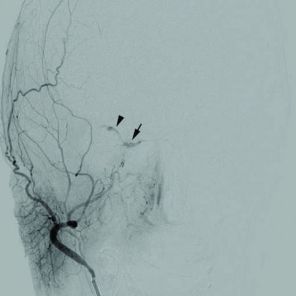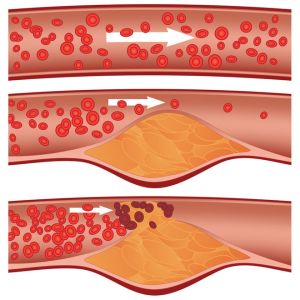What is Metabolism?
What is metabolism? Generally, metabolism refers to the chemical processes that occur within a living organism to maintain life. In other words, metabolism refers to all chemical reactions involved in maintaining the living state of the cells and the organism. When your body metabolizes foods you eat, it changes them into other forms that can be used as energy that gives you physical power to do works. In fact, metabolism produces energy from the food you eat. A metabolic disorder disrupts metabolism in your body. Without metabolism, your body can’t produce energy from foods and you feel weakness in spite of eating foods. The development of different diseases especially the cardiovascular disease, insulin resistance, or type 2 diabetes may be occurred due to metabolic syndrome which means a cluster of metabolic disorders..
What is metabolic syndrome?
In general, metabolic syndrome means a cluster of biochemical and physiological abnormalities associated with the development of cardiovascular disease and type 2 diabetes. www.heart.org characterizes metabolic syndrome as a cluster of metabolic disorders. If you are with these conditions together, the chance of future cardiovascular disease is greater than any one factor presenting alone. Suppose, if you have high blood pressure along with high fasting glucose levels and abdominal obesity, you may be diagnosed with metabolic syndrome. The major causes of metabolic syndrome are overweight and obesity, physical inactivity, getting older, and genetic factors.
According to www.heart.org, metabolic syndrome occurs when a man has three or more of the following measurements:
- Obesity: waist measuring is greater than 40 inches for men, and greater than 35 inches for women).
- Glucose level: 100 mg/dL or greater (greater than 5.6 mmol/L)
- Cholesterol (HDL): less than 40 mg/dL for men or less than 50 mg/dL for women.
- Triglyceride level: 150 mg/dL or greater.
- Blood pressure (top number) of 130 mm Hg or greater, or (bottom number) of 85 mm Hg or greater.
How can you understand you have metabolic syndrome?
How can you understand you have metabolic syndrome? You may have metabolic syndrome if you feel one of these symptoms – increased blood pressure, high blood sugar, excess body fat around the waist, excess weight, and abnormal cholesterol levels. You may not feel symptoms in earlier stage. The www.heart.org suggests that metabolic syndrome is not one that one can assess without the help of a healthcare provider. However, you will need to discuss your combined risks with the healthcare provider to identify metabolic syndrome if you have a large waist circumference and have been told by the healthcare providers that you have another condition like elevated triglycerides, high blood sugar or high blood pressure.
What is liable for metabolic syndrome?
Sugar consumption, especially from sugary drinks, is one of the largest, but preventable, contributors to the global epidemic of type 2 diabetes, heart disease, high blood pressure, bad cholesterol, and weight gain – all of these are parts of metabolic syndrome. Fructose, glucose, and sucrose are sugar. Fructose is one of the three dietary monosaccharides, along with glucose and galactose, that are absorbed directly into blood during digestion. We get fructose in honey, tree and vine fruits, flowers, berries, and most root vegetables. Fructose is commercially derived from sugar cane, sugar beets, and maize. In liquid form, fructose is worse! Excessive consumption of fructose can cause steatosis (fatty liver) that is the buildup of fat in the liver.
The European Food Safety Authority stated that fructose is preferred in food and beverage manufacturing to replace sucrose and glucose as fructose has lower effect on blood glucose level following eating a meal. But EFSA noted that “high intakes of fructose may lead to metabolic complications such as dyslipidaemia, insulin resistance, and increased visceral adiposity”. As such, as a common sweetening ingredient for foods and beverages, fructose has been associated with increased risk of obesity, diabetes, and cardiovascular disorders that are part of metabolic syndrome.
Can you reverse metabolic syndrome?
As a best metabolic syndrome treatment, a plant-based diet can help you control metabolic syndrome. The good news is that with the changes in diet and exercise habits, you can prevent, control, or even can reverse metabolic syndrome. By losing weight, eating a healthy diet and increasing physical activities, you can reduce the metabolic syndrome. If you don’t, you could develop significant health risks relating to type 2 diabetes, heart disease, and stroke.
There are various types of weight loss foods that you can consume for weight loss. Consume complex carbohydrates which are found in foods such as peas, beans, whole grains, and vegetables. These are called the best metabolic syndrome diets. In order to lose weight, consume weight loss diet regularly. Visit this site weight loss diet where you can get more information on weight loss diet.
Here are also some important steps provided by American Heart Association for patients and their doctors in managing the metabolic syndrome:
- Routinely monitor body weight (especially central obesity).
- Monitor blood glucose, lipoproteins and blood pressure.
- You should treat individual risk factors (hyperlipidemia, high blood pressure and high blood glucose) according to established guidelines.
- While choosing high blood pressure drugs you should be very careful because different drugs have different effects on insulin sensitivity.
Now you understand all about the metabolic syndrome, symptoms, and its remedy. Though metabolic syndrome is a serious condition, you can reduce your risks significantly by reducing your weight taking weight loss diet; increasing physical activity; eating a heart-healthy diet that’s rich in whole grains, fish, vegetables, fruit; and
 the muscular-walled tubes forming part of the circulation system by which blood (mainly that which has been oxygenated) is conveyed from the heart to all parts of the body. Peripheral artery problem generally manifests at legs; but other arteries, including arms, can be affected as well. If this narrowing fact occurs in the heart, it is called
the muscular-walled tubes forming part of the circulation system by which blood (mainly that which has been oxygenated) is conveyed from the heart to all parts of the body. Peripheral artery problem generally manifests at legs; but other arteries, including arms, can be affected as well. If this narrowing fact occurs in the heart, it is called  My father also asks me a question, “How does diabetes cause heart disease?” I tell him that research has proved it that the most common cause of heart disease is seen in a person with diabetes who faces the hardening of coronary arteries. In this case, the main reason of having heart disease is building up of cholesterol in the blood vessels that supply oxygen and nutrition to the heart. But the alarming fact is that the cholesterol can combine with fat, calcium, and other substances in the blood to form a plaque. This plaque slowly builds up and hardens in the arteries causing them to narrow. Building up of such cholesterol generally begins before the increase in blood sugars that occurs in type 2 diabetes. So, it is clear that the most heart diseases establish themselves prior to the diagnosis of type 2 diabetes
My father also asks me a question, “How does diabetes cause heart disease?” I tell him that research has proved it that the most common cause of heart disease is seen in a person with diabetes who faces the hardening of coronary arteries. In this case, the main reason of having heart disease is building up of cholesterol in the blood vessels that supply oxygen and nutrition to the heart. But the alarming fact is that the cholesterol can combine with fat, calcium, and other substances in the blood to form a plaque. This plaque slowly builds up and hardens in the arteries causing them to narrow. Building up of such cholesterol generally begins before the increase in blood sugars that occurs in type 2 diabetes. So, it is clear that the most heart diseases establish themselves prior to the diagnosis of type 2 diabetes If you can change your dieting habits according to your health requires, and so your lifestyle according to healthy style, then these changing will be the best weapon to fight with cardiovascular diseases like heart attack, stroke, etc. It will be heart healthy. One thing is to be always remembered that you should use up at least as many calories as you take in. This will help you maintain your weight. Don’t eat more calories than you know you can burn up every day. So you should increase the amount and intensity of your physical activity to match the number of calories you take in. Regular physical activity can help you maintain your weight, keep off weight that you lose and help you reach physical and cardiovascular fitness.
If you can change your dieting habits according to your health requires, and so your lifestyle according to healthy style, then these changing will be the best weapon to fight with cardiovascular diseases like heart attack, stroke, etc. It will be heart healthy. One thing is to be always remembered that you should use up at least as many calories as you take in. This will help you maintain your weight. Don’t eat more calories than you know you can burn up every day. So you should increase the amount and intensity of your physical activity to match the number of calories you take in. Regular physical activity can help you maintain your weight, keep off weight that you lose and help you reach physical and cardiovascular fitness.  If your body can’t use all cholesterol produced by body cells, then the excess cholesterol form plaque between layers of artery walls. This plaque makes the arteries hard, and your heart can’t circulate blood though the body. Plaque causes blood clots which block the blood circulation. When a clot blocks an artery which sends blood to the brain, it causes a stroke. When a clot blocks an artery which sends blood to the heart, it causes a heart attack.
If your body can’t use all cholesterol produced by body cells, then the excess cholesterol form plaque between layers of artery walls. This plaque makes the arteries hard, and your heart can’t circulate blood though the body. Plaque causes blood clots which block the blood circulation. When a clot blocks an artery which sends blood to the brain, it causes a stroke. When a clot blocks an artery which sends blood to the heart, it causes a heart attack.